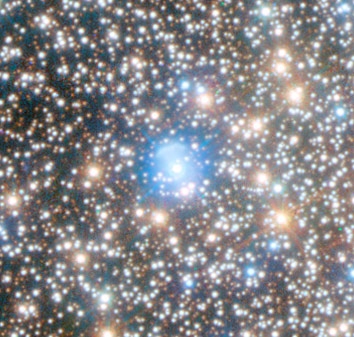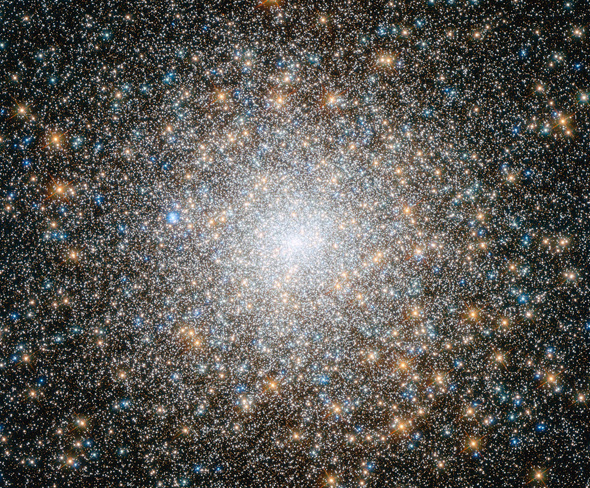A New Look at an Old, Old Star City
When you look up at the sky, the stars appear strewn across the heavens. If you pay attention, you’ll see that they aren’t spread evenly; they tend to be more densely packed and brighter along a path in the sky; that’s the Milky Way, our own flat galactic disk seen from the inside out.
If you pay very careful attention, you might notice fuzzy spots here and there, especially if you scan the sky with binoculars. Some of those are nebulae, gas clouds, where stars are forming out of the Universe’s raw materials. But others are star clusters; thousands of stars huddled together, born together from one of those nebulae, gravitationally bound to each other.
One type of these star cities is a globular cluster, an extremely rich and dense hub of stars. There are about 150 of these known to orbit our galaxy, which formed roughly at the same time (or slightly before) the Milky Way did, ten or more billion years ago. One of the best examples of a globular is the dazzling M15, a bright and spectacular beehive easily seen using just binoculars. So you can imagine that when you point Hubble at it, you get surpassing beauty:
[Photo by NASA / ESA]
Ahhhhhh. Check out a much bigger version, or click the picture for a huge version. Note that Hubble took a shot of M15 in 2011, but this one is higher resolution and, in my opinion, prettier.
M15 is about 35,000 light years away, and something less than 200 light years across. Over 100,000 stars call M15 home, packed tightly into that ball. How tightly? The nearest star to the Sun is Alpha Centauri, a little over four light years away. M15 would crowd over 2000 stars in a cube that size!

Photo by NASA / ESA
Near the Sun, stars are too distant from one another to interact much. But in a globular like M15, they swing past each other all the time. This tends to drop more massive ones into the center and throw lighter ones to the outskirts (this is called mass segregation); over time this puts lots of massive, short-lived stars in the core. Stars like that can explode and form black holes; over billions of years these can eat each other, forming a larger object called an intermediate mass black hole, one with a few hundred or thousand times the mass of the Sun (it’s bigger than one formed from a single star, but much less massive than the monsters found in the centers of galaxies; hence the term “intermediate”). Evidence points to one being in the core of M15, roughly 2000 times the mass of the Sun, though it’s not completely conclusive.
Also, see the bright blue “star” to the lower left of the core? That’s actually a planetary nebula, the ejected gas from a dying star. Those are very rare in globulars; most of the stars in a globular cluster are well past the age where they can form such an object (only four are known in total). This one, called Pease 1, glows blue due to the presence of various elements in the gas — I’ll note that this image is a combination of images using five filters; two in the ultraviolet (displayed in the final picture as blue), one in green, one in red (displayed as yellow), and one in the near infrared (displayed as red). The blue color here is probably from hot oxygen and neon in the gas ejected by the dying star.
M15 is in the constellation of Pegasus, which, in the late fall and early winter, is high above the horizon for northern hemisphere folks. M15 is amazing through a telescope, so if you get a chance to see it, take it! Perhaps there’s a nearby observatory or astronomy society that has star parties; if so, find out if they’re holding one soon, and take the chance to see this glorious object. There are many, many other delights in the night sky up right now as well, including two early morning comets, a handful of planets, and the usual roster of nebulae and clusters. Go! The entire Universe is out there waiting for you to take a look.


